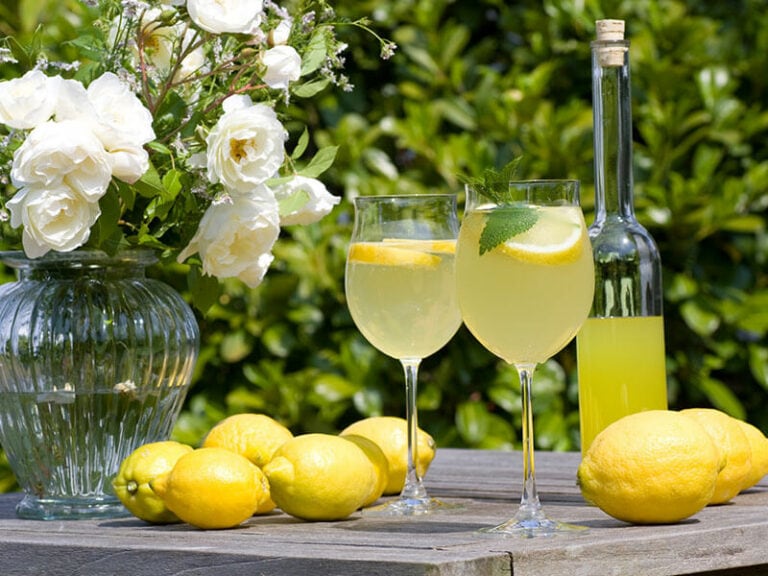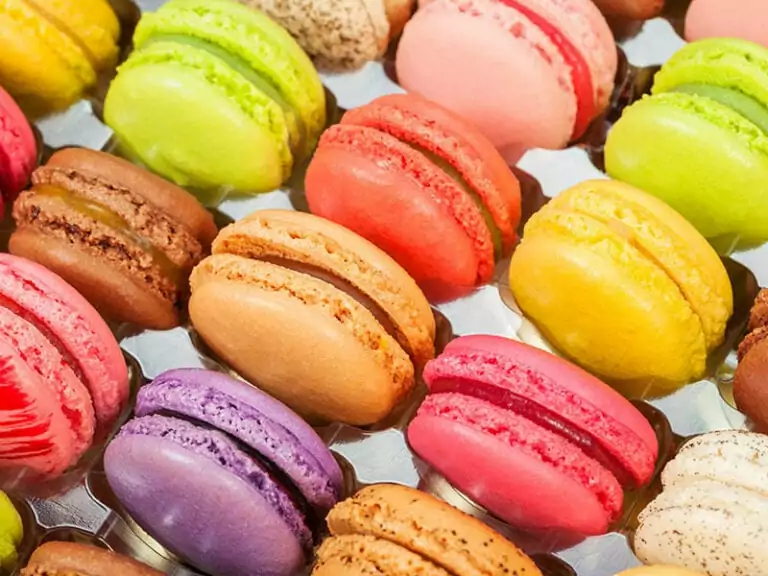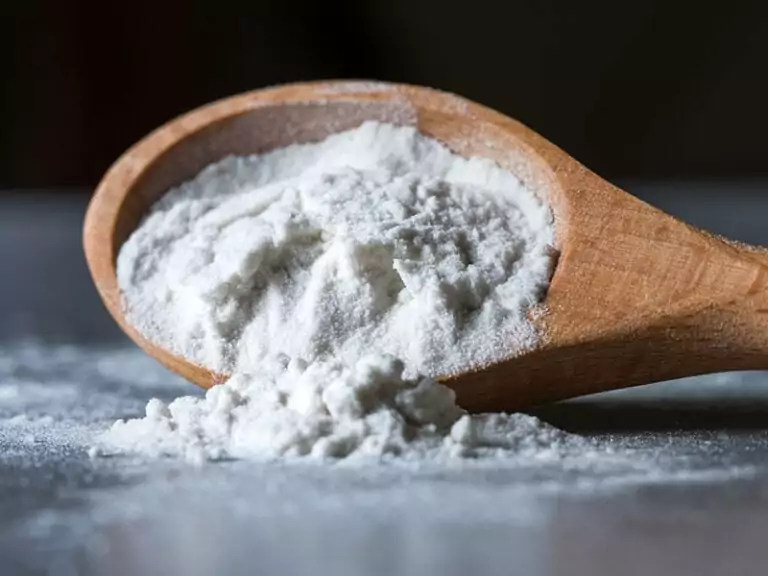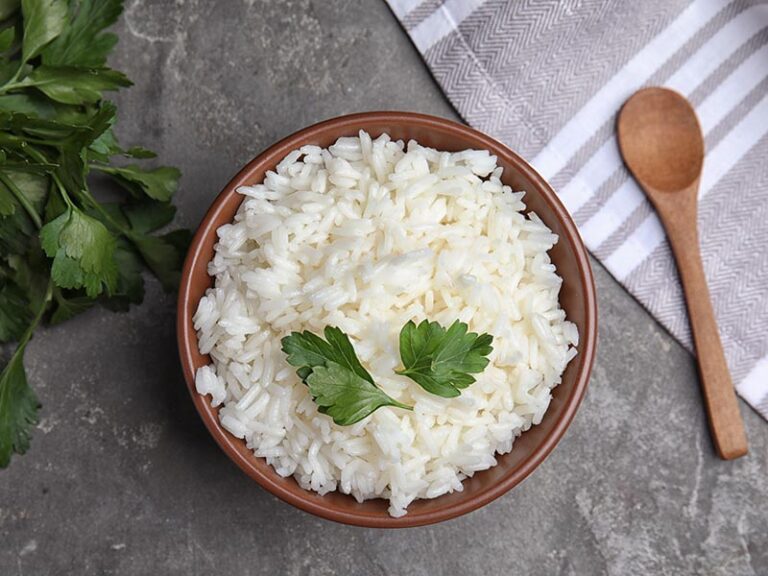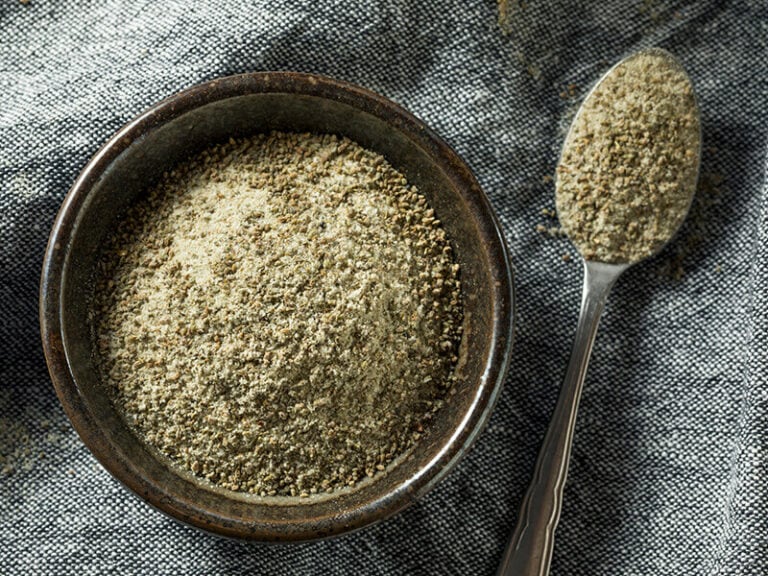Intro: Answering “is chocolate vegan?” is impossible in some sentences. You already know that chocolate has been a source of confusion to newcomers and vegan enthusiasm. I understand your struggles, so this post is the full breakdown of the issue.
Animal-derived products have been in the spotlight over the past few years. More and more people choose to consume vegan foods. But vegan chocolate may seem alien to you somehow. Let’s go on this sweet journey and find out with me.
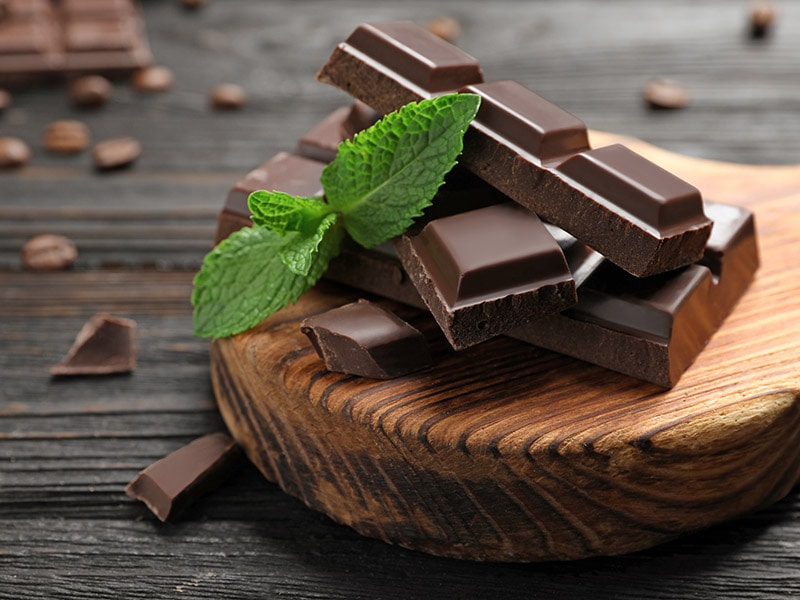
What Is Chocolate?
Sure, you have once enjoyed the sweet taste of chocolate. But not many people know where it comes from or what types of chocolates there are.
A Brief History Of Chocolate
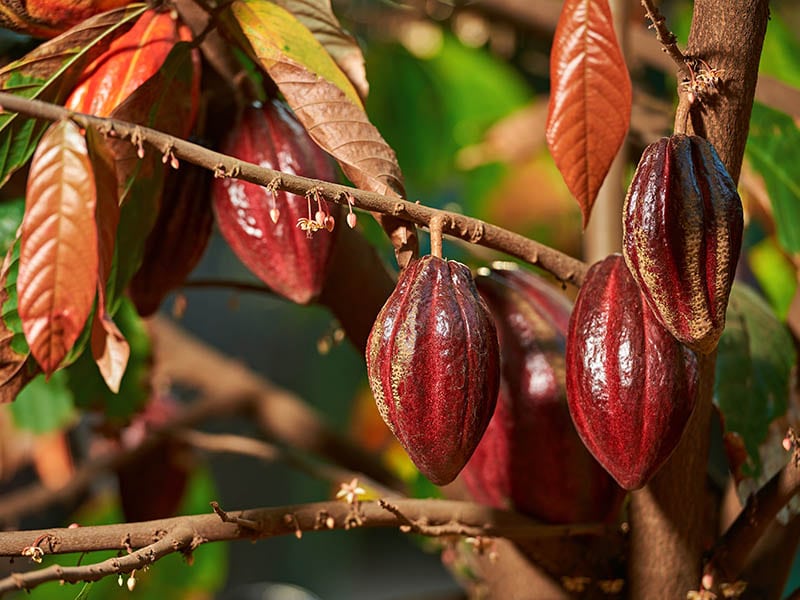
Historians claim that chocolate has been a part of history since 4000 years ago. Ancient Mesoamerica (Mexico nowadays) is considered the cradle of chocolate as the first cacao plants were discovered here (1).
Generally, chocolate is made from cacao beans, indigenous to Central and South America. Scientists haven’t figured out when cacao happened on the scene or who created it.
According to the Mayans’ history, they would have cacao consumption during special ceremonies or religious rituals. Also, they considered cacao beans as currency to exchange for goods and services (2).
Then, explorers discovered chocolate and made it well-known around the world. The legend of cacao beans quickly spread to England, the Netherlands, and Germany from there.
Not long after, chocolate became an upper-class extravagance that dominated in Europe, only for the elite and royalty (3). Nowadays, chocolate has become a much-loved indulgence, appealing to children and adults alike.
Learn more about the history of chocolate and some interesting facts here.
Types Of Chocolate
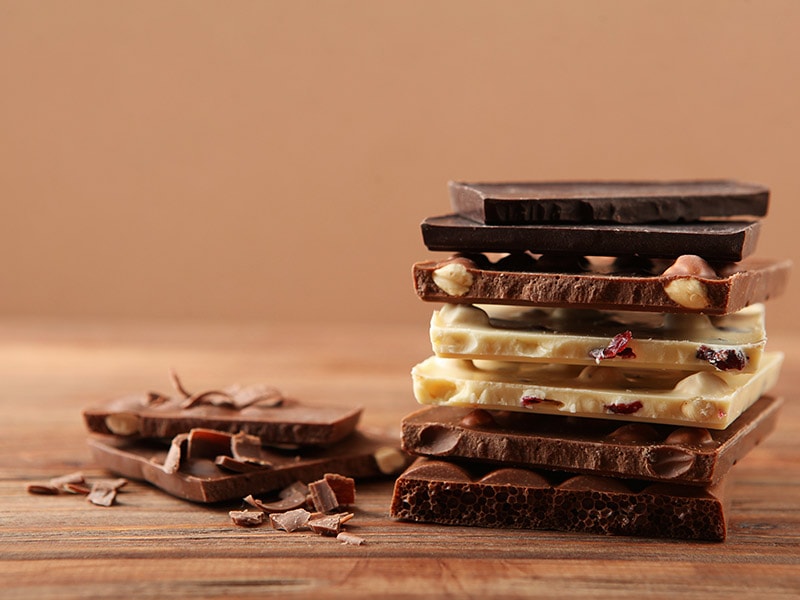
Chocolate has become a mass-production industry to meet the growing demand of customers. According to the World Cacao Foundation, the annual production of cacao beans passes 4 million tons. (4) The good news for all the sweet teeth is that vegan chocolate is on the rise.
Chocolate has a characteristic bitter taste, accompanied by an attractive aroma and varied shapes. The bitter taste decreases in 3 categories respectively: dark chocolate, milk chocolate, and white chocolate.
Dark Chocolate
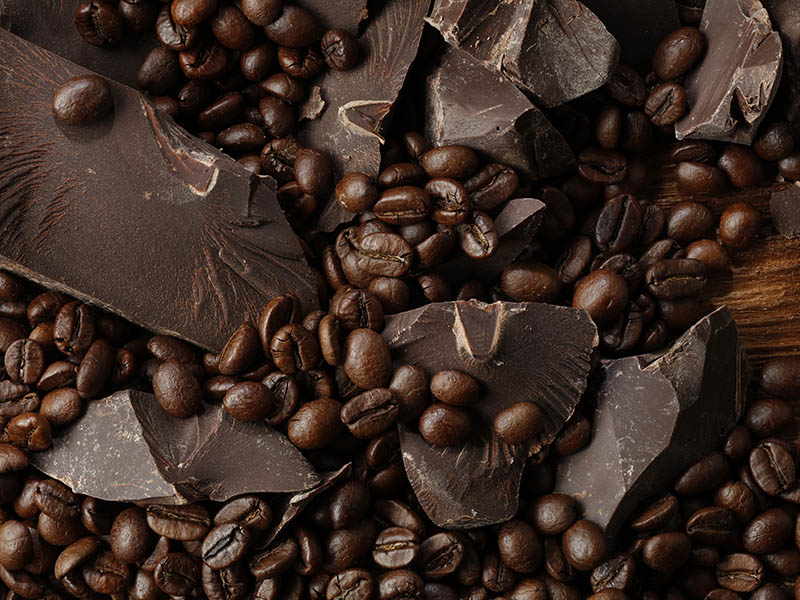
Dark chocolate is simple in composition, such as cacao solids and cacao butter in its pure form. It often has a more natural bitter taste than others due to the high cacao content. The blend formula is always a delicate balance between sweetness and bitterness.
It’s safe to assume that dark chocolate has surged in popularity thanks to numerous articles about its health benefits. Many believe that dark chocolate is a powerful ally in the fight against diabetes.
Dark chocolate’s well-known health benefits make it a favorite snack for health-conscious customers.
Milk Chocolate
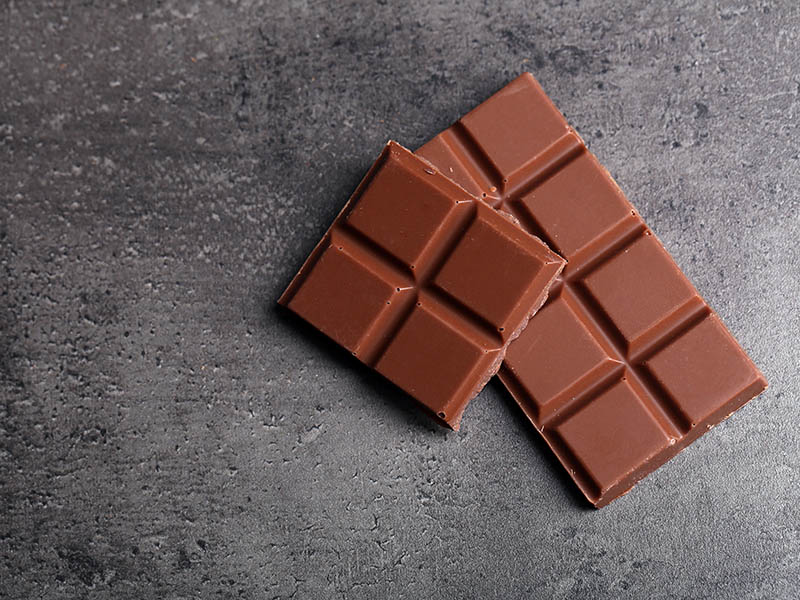
Milk chocolate has a shade of brown, usually containing at least 10% of chocolate liquor. This combination gives the popular chocolate variant a sweet and less bitter flavor.
It’s not surprising that milk chocolate is the most popular among the three. Assumedly, milk chocolate is a likable middle child of the chocolate family. Everybody loves it!
Compared to dark chocolate, the milk candy is sweeter and softer. But at the same time, it has less sweetness and a firmer texture than the brother white chocolate.
White Chocolate
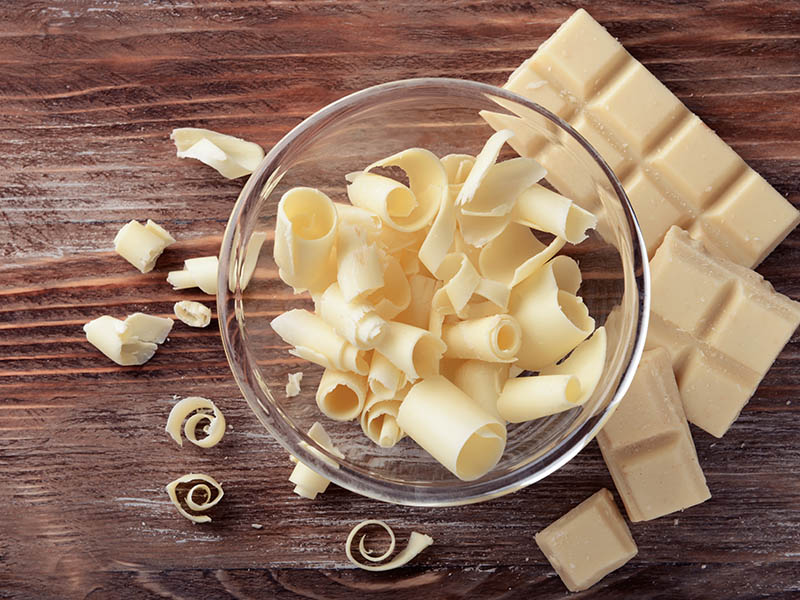
Despite many toothsome desserts with white chocolate have gained numerous love, many people still don’t consider this ivory or light yellow sweet as “chocolate”. White chocolate contains 0% of cacao content as it includes cacao butter, sugar, and some dairy products.
Contrary to its siblings, white chocolate doesn’t perform many health benefits as its fat and sugar content are relatively high. On the other hand, the white candy is caffeine-free, making it ideal for those who are sensitive to caffeine.
What a treat for the eyes! How many types of chocolates have you tried before?
Chocolates – Vegan Or Not?
Along with animal-friendly consumption on the rise, this appears to be the right time to approach the question if chocolate is vegan. For all the fellow sweet lovers out there, I know that you all are fond of hearing neutral answers.
It’s time to dig deep into this question and find an ultimate answer for you.
An Overall Answer
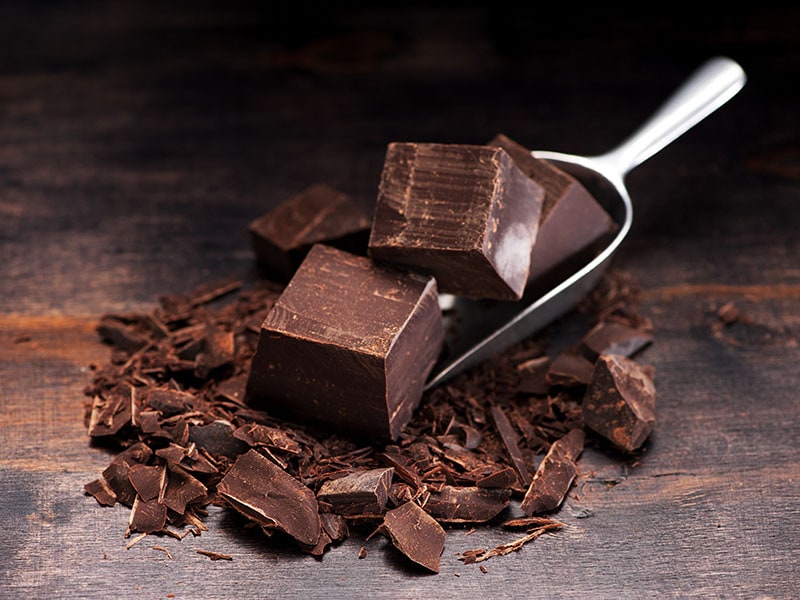
The short answer is maybe. Chocolate is vegan or not, depending on the types you buy, but I cannot answer 100% for all.
In nature, chocolate is vegan in its pure form because the main ingredient of chocolate is cacao beans. However, the commercial production of the candy and the added sweeteners blurred the line. Technically, most chocolates aren’t vegan.
This is due to two items on the ingredient list for most chocolate: sugar and milk derivatives. Cow milk is the only non-vegan ingredient in chocolate.
And, even though sugar comes with many types, its history is usually not on the vegan side. Neither sweeteners nor dairy items are suitable for vegans.
Overall, most chocolates aren’t vegan due to the added ingredients. However, some brands do have vegan versions of chocolates. You should check the ingredients list and read the label for sure.
What Makes Chocolate Non-Vegan?
I bet many names in the ingredient list may make vegans put the chocolate bar down right away. Can you guess what they are?
Natural Flavors
Vegans generally do not want to be associated with natural flavors because some will be tested on animals. Moreover, not all-natural flavors are plant-based but can be obtained from animal sources.
That is the same case for enzymes. There are possibilities that the enzymes in chocolates are animal-derived ingredients.
Milk And Milk Derivatives
As I stated many times in the article, cow milk is present in most chocolates because they are a great combination to balance sweetness and bitterness. Nevertheless, cow milk is also one of the reasons vegans hesitate to buy chocolates.
Another trap of manufacturers is milk derivatives. Don’t think that it would be a pass if there is no “milk” word in the ingredient list. Also, you need to avoid names like lactose, casein, or whey powder from milk.
Lecithin
Lecithin is a common ingredient in commercial chocolate. While most lecithin comes from plant-based ingredients, there are chances that it may be produced from eggs.
Biscuit And Caramels
Except for traditional chocolates, there are versions with flavors such as fruit, nuts, and especially caramel and biscuits. Just so you know, butter is often present in biscuits and caramel, whether from animal or plant-based products.
Therefore, be a little tricky when choosing a confection that contains them.
Refined Sugar
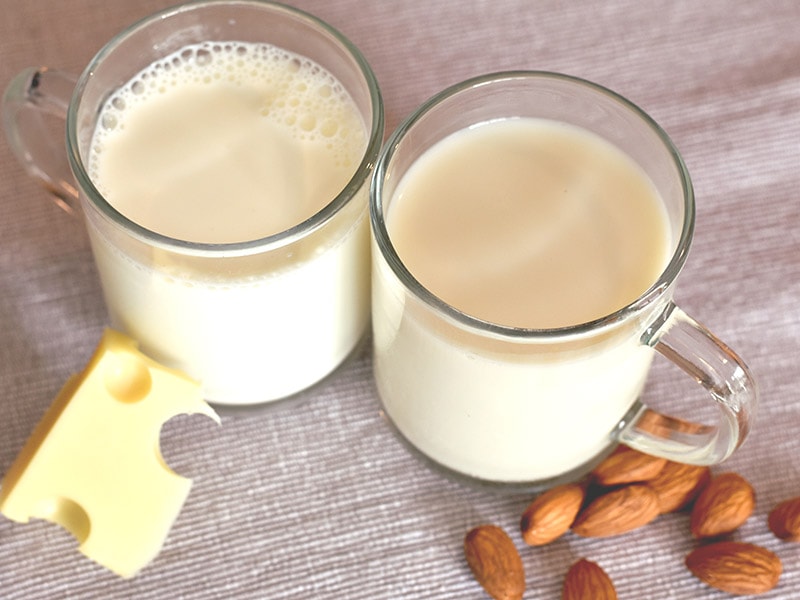
Here comes the tricky one. It’s common knowledge that sugar is made from sugar cane or plants. So how can it be non-vegan? The answer is that refined sugar needs to use charred animal bones in the processing.
Therefore, vegans will automatically stay away from this ingredient.
Detail Information About Each Chocolate Type
Have you ever wondered what kind of chocolate is vegan? Who knows? Maybe the white chocolate bar you are holding in your hands is vegan-friendly. Learn with me how to tell the difference.
How Do You Know If Dark Chocolate Is Vegan?
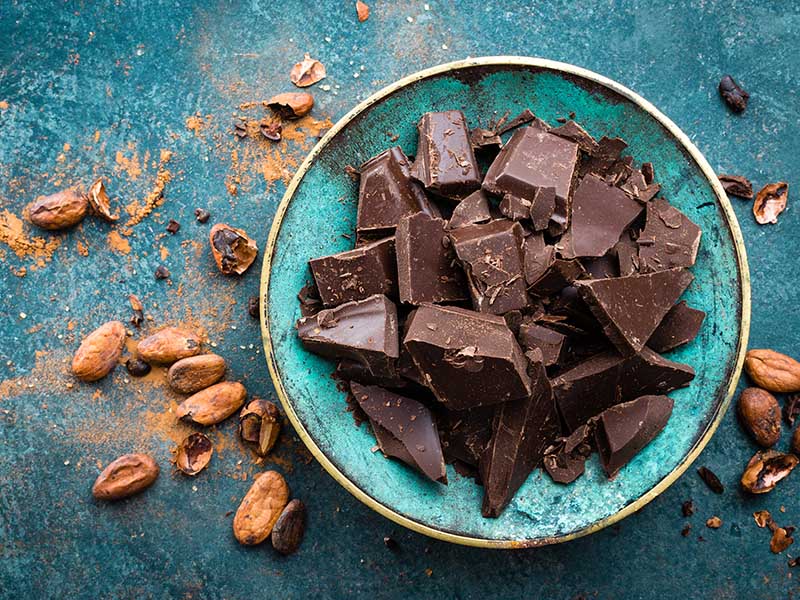
Among its brothers, the dark choco is more vegan-friendly than others. Usually, its composition includes a few ingredients and is without milk or sugar. The rest are also mostly or entirely plant-based.
To make sure, I highly recommend you to buy dark chocolate with a high content of cocoa. Try those between 50% to 85% cocoa if possible.
Once again, there are chances that other additives in the dark choco are non-vegan such as artificial flavors or milk derivatives. Don’t forget to read the ingredient list carefully.
It’s clear that dark confectionery can carry a vegan label. The good news is that dark chocolate is easy to find at stores or online. Maybe the hard job is checking the vegan label.
In particular, you will see a big V-Label or V with a leaf on the packaging. They stand for vegan and vegetarian products and services. The labels appear on products of both major brands and small suppliers.
Is White Chocolate Vegan?
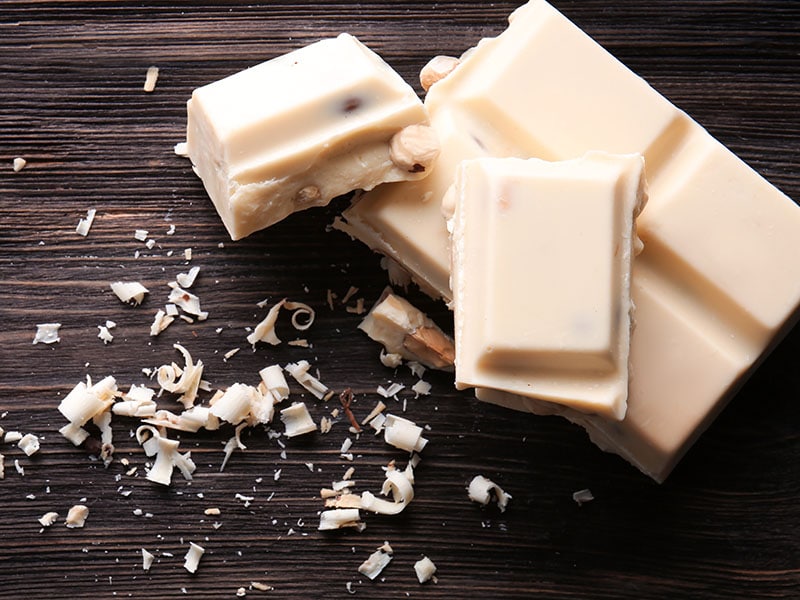
In definition, the short answer is no. Regular white siblings are not vegan-friendly.
Every standard white chocolate contains some types of milk or milk derivatives. Many regions prohibit confectionery from being labeled “white chocolate” unless it contains a minimum of dairy ingredients.
When you scan the ingredient list, you will see some dairy terms like “milk fat” or “skim milk”. Part of its creaminess and flavor comes from cow milk which, as an animal product, makes the chocolate non-vegan.
Luckily, many premium white chocolate brands do not forget their child. There are vegan white chocolates available using coconut milk, rice milk, or nut milk powders on the market.
So What About Milk Chocolate?
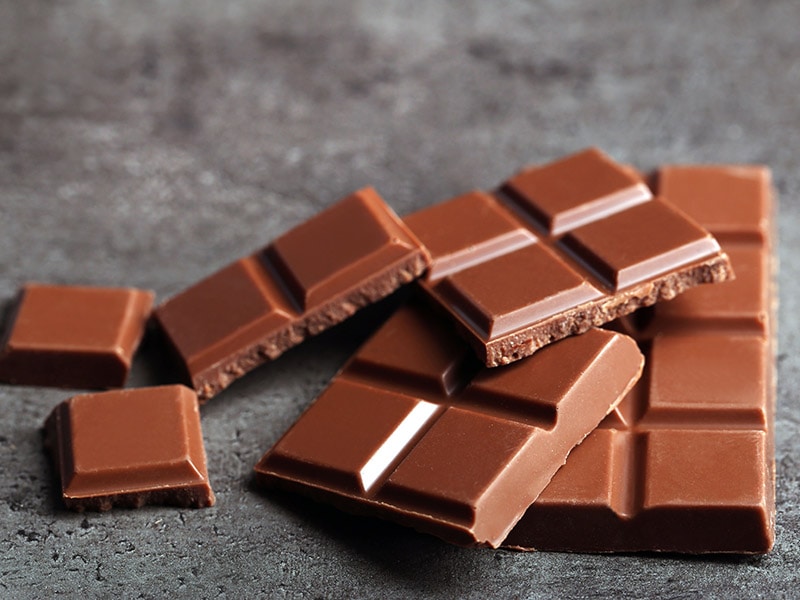
Even its name tells you something, milk chocolate is not vegan. As cow milk is present in the ingredients, you may expect that vegans will exclude this sweet treat from their snack time.
However, there are various vegan versions of milk chocolate on the market. It may come as a surprise that non-vegans or non-chocolate experts can’t tell the differences in flavors between the original and the vegan ones. Sometimes, it even beats the original.
Eating vegan milk chocolate doesn’t mean that you settle for less. Remember that the quality of chocolate relies on the quality of cocoa, not the type of milk.
What Chocolate Can Be Vegan-Friendly?
Now that you know that vegan chocolates are possible. Let’s go into details to see what vegan chocolate is.
Raw Chocolate
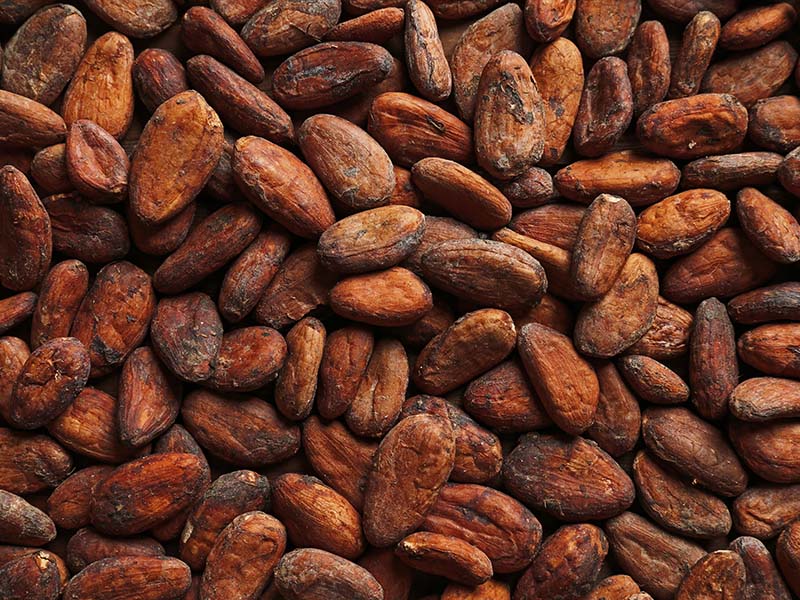
First and foremost, let’s talk about raw chocolate. With only cacao as the ingredient, pure and unrefined chocolate is naturally vegan. The source of chocolate is theobroma cacao plant or cacao tree. Raw chocolates are from their seeds, 100% plant-based ingredients.
These beans are dried, toasted, and ground then made into cacao powder and cacao butter. Pure chocolate is a combination of cacao solids and cacao butter in a specific ratio.
Since raw chocolate says no to sweeteners, its flavor profile is quite bitter.The good thing is that you can rest assured that chocolates with 100% cacao content will be vegan because it doesn’t have any extra ingredients.
Chocolates Without Additives
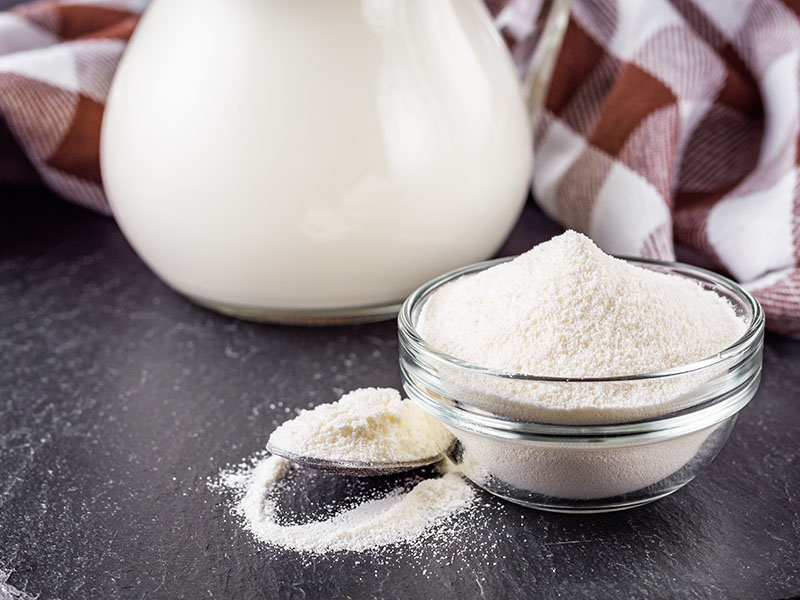
Apart from pure chocolates, there are two other types of vegan chocolates: dark chocolate with high cocoa content and chocolate made from alternative dairy-free milk. Of these two, the dark is a safer bet, but you still need to check it for sure.
Usually, a vegan-approved chocolate bar carries ingredients such as cacao powder, cacao butter, vanilla, and some particular sweeteners.
Keep in mind that the fewer the ingredients are, the purer the chocolates are for vegans. As a result, dark chocolate with more than 50% cacao content is often ideal for vegans.
In addition, as its name indicates, you know milk chocolate is not vegan-friendly. Yet some brands decide to replace dairy with coconut or plant-based milk to preserve the rich flavor. Interestingly, milk chocolate is sometimes a good choice for vegans too.
Homemade Vegan Chocolate
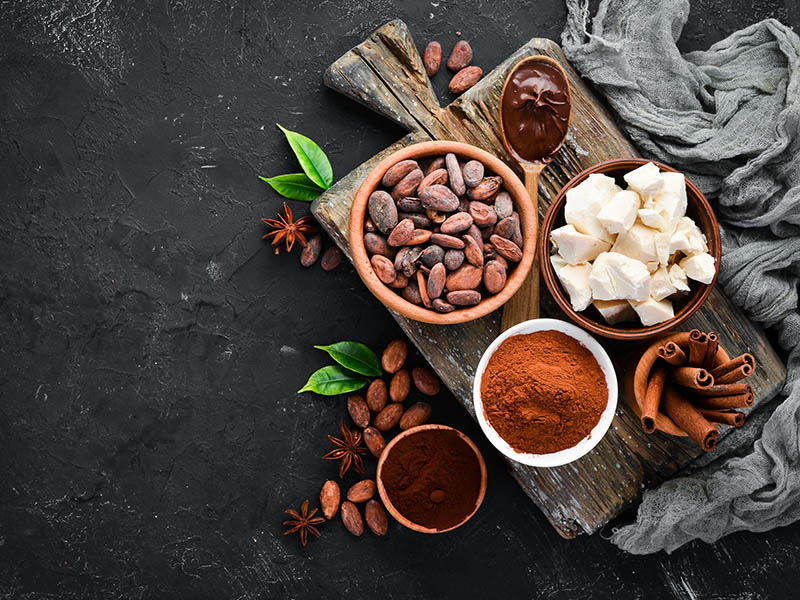
The last case of these vegan candies, which I am 100% sure of, is homemade chocolate. Think about it. If you make vegan chocolate at home, you have complete control of the ingredients and get rid of the animal products from the dark sweets.
So what ingredients do you need to be able to make a box of vegan candies? A vegan chocolate bar can consist of:
- Cocoa or cocoa beans
- Cocoa butter or cacao butter
- Cocoa or cocoa nibs
- Sugar
- Milk powder
As you can see from the list of ingredients above, there are two noticeable names: sugar and milk powder.
More especially, refined sugar requires bone char during the heating process and thus is not suitable for vegans. However, sugars certified organic by the US Department of Agriculture are not filtered by bone char.
Another note is that milk powders are the powdered versions of cow’s milk. But dairy-free spread, coconut oil, or oat milk can be dairy alternatives instead to animal milk.
And About The Flavor
More and more chocolate companies launch dairy-free versions of their desserts. This comes into the scene when people get more aware of animal products, whether for environmental, health or other reasons. But do these vegan versions taste the same?
In short, no. Compared to the classical confection of Hershey or Cadbury, the vegan versions cannot meet that standard. However, the difference is not too obvious with the regular ones. Mainly it will have a stronger taste of bitterness than the regular.
Some food-tech companies are researching to produce dairy-free milk protein to apply to their products. Sooner or later, you can eat any type of this sweet without worrying about its dairy ingredients.
Is Vegan Chocolate A Healthy Choice For You?
Believe it or not, there are plenty of benefits associated with the consumption of vegan chocolates. I have reasons to say that vegan chocolate is a healthier option than the regular one.
It would not be a stretch to say that eating an ounce or two of vegan confection a day will make you healthier.
Nutrition Facts
As I have emphasized already, vegan chocolates include dark chocolate with more than 50% cacao or more and vegan versions by brands. Yet the USDA has not provided nutritional information for vegan chocolate.
For the sake of comparison, I am using dark chocolate data with 70-85% solid (5) and based on a generic listing of one serving (25 grams) of Raaka Coconut Milk Unroasted Dark chocolate.
Now, take a look at the nutrition facts of 100 grams of dark chocolate vs. 100 grams of vegan dark milk chocolate and spot the differences. Can you tell?
As you can see from the table above, dark chocolate and vegan chocolate are not much different regarding nutrients. The dark ones vary in options, but most are rich in iron, flavanol, copper, or magnesium. (6)
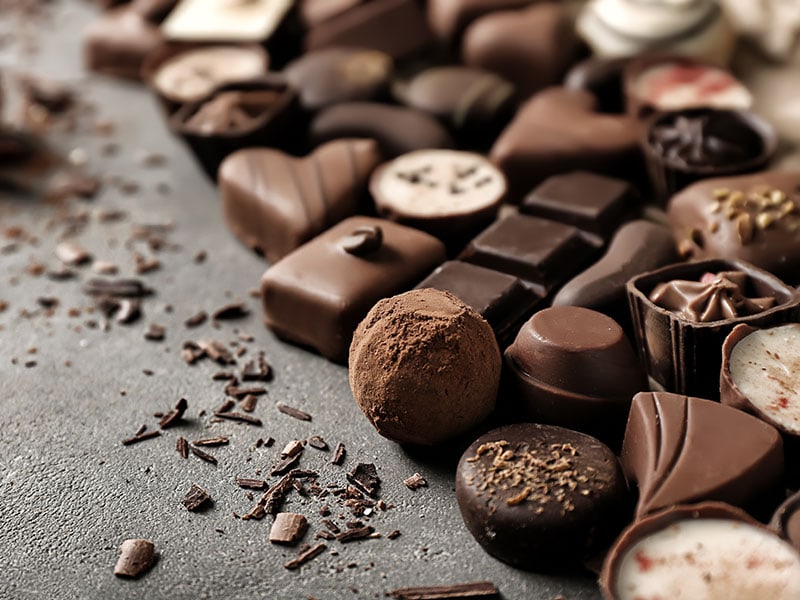
Health Benefits
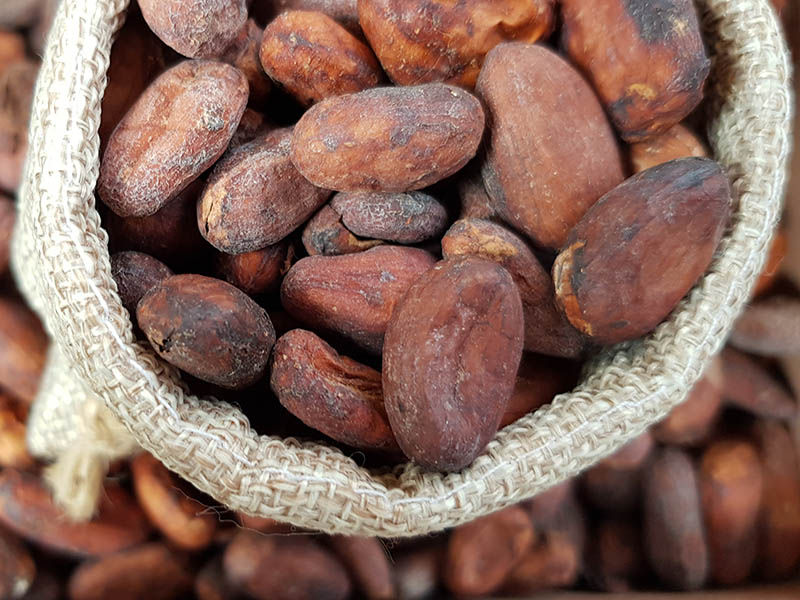
A bite of the dark candy or vegan confection per day comes with added health benefits. The main source of chocolate is the seeds from the cacao tree, one of the best sources of antioxidants ever.
Studies also prove that the flavanol content in dark chocolates is beneficial to protect the heart against cardiovascular disease. Not to mention, dark chocolate contains 2-3 times more flavanols than the brown one.
Flavonols help reduce insulin sensitivity and might lower the risk of diabetes. Unfortunately, the health benefits of flavanols in cacao are at low levels or not present at all in most commercially produced chocolate. (7)
Be aware of other dark sides of the sweet snack. The high calories in the dark candy can add weight to your body if you consume it in large quantities. Also, keep an eye on your blood lipid levels because the saturated fat in dark chocolate may take a toll on them.
But overall, the benefits of flavanols win over the risk. Hey! I am not listing all these benefits so that you can eat indiscriminately. Vegetables and fruits are always healthier options. Yet one or two ounces of the dark “spell” daily will help.
Unveil the story of cocoa flavanols and learn more of its health benefits here.
Where To Buy Vegan Chocolate
Here comes my favorite part of the day. Who does not love shopping? There is a wide range of vegan chocolate brands out there. But here is the list of the brands gaining the highest rated reviews, in my opinion.
UnReal
All UnReal’s dark chocolates are vegan-friendly. The main ingredients of chocolate are mostly plant-based and dairy-free, such as quinoa, palm oil, carrot juice, and organic dairy.
The brand achieved the certification of the Vegan Action Group, and they guarantee that they never did tests on animals, either.
Endangered Species
Endangered Species claims that their source of cocoa comes from small family-owned co-ops in West Africa. All the resources are organic and non-usage of pesticides. Their chocolate bar gained recognition from Consumer Labs for the high content of cocoa.
Another plus for Endangered Species is that the brand donates 10% of its annual profits to conservation efforts for endangered wildlife.
Alter Eco Foods
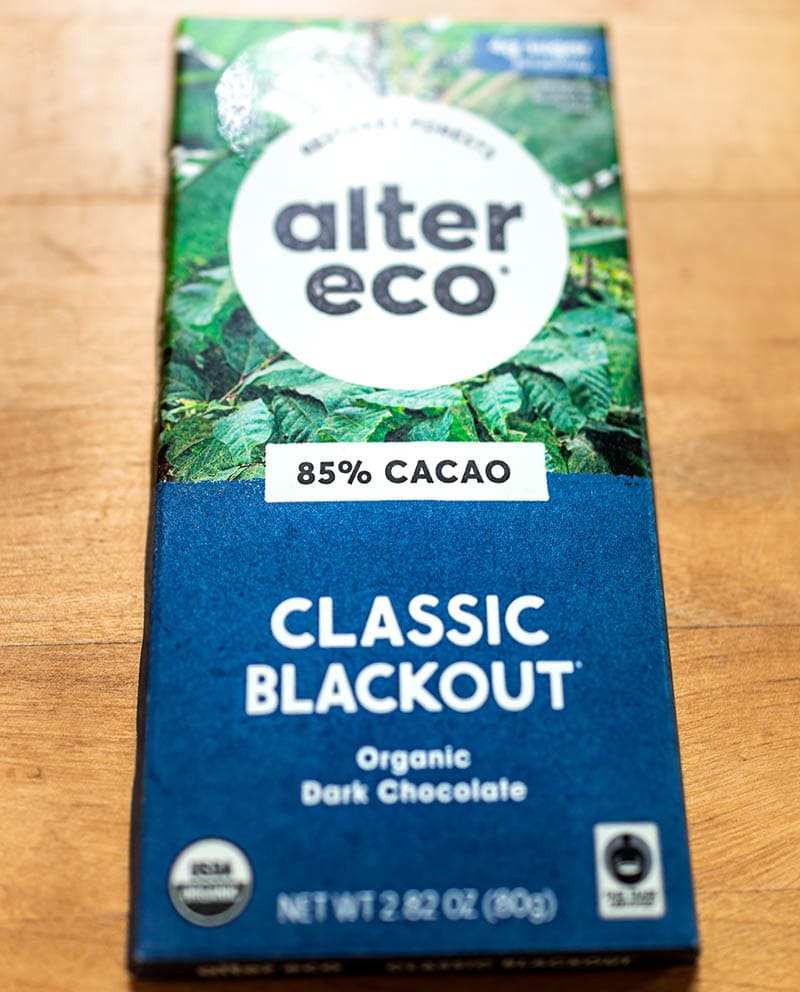
I must admit that I adore the packaging of Alter Eco. They are colorful and eye-catching, such a treat for the eyes. Alter Eco vegan chocolates get high praise from vegan lovers for maintaining the fat and texture.
Significantly, the Classic Blackout dark chocolate is a gem with 85% cacao. The composition only includes organic cocoa beans plus organic cocoa butter.
Theo
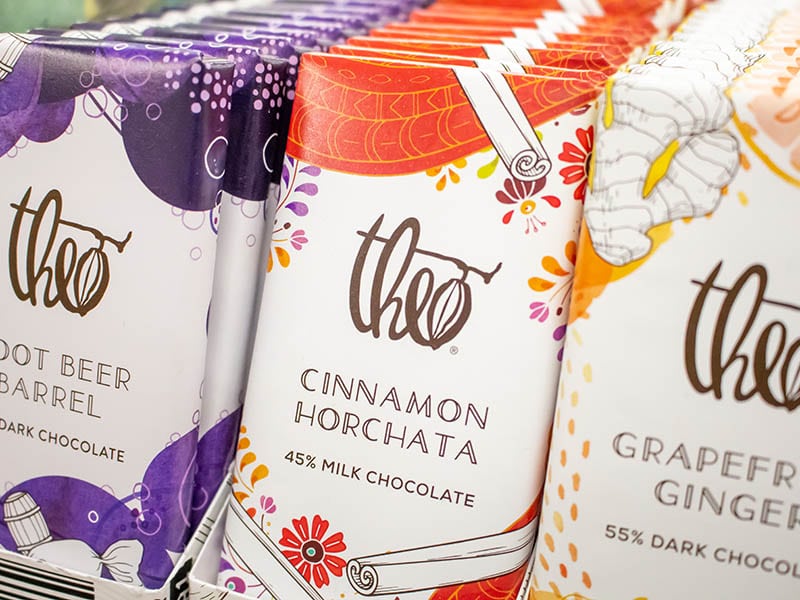
The brand offers plenty of vegan varieties, so you should check the label for information. Theo focuses on making chocolate from scratch and gradually has become a leader in the industry. It’s no surprise that the brand has won many awards.
Evolved
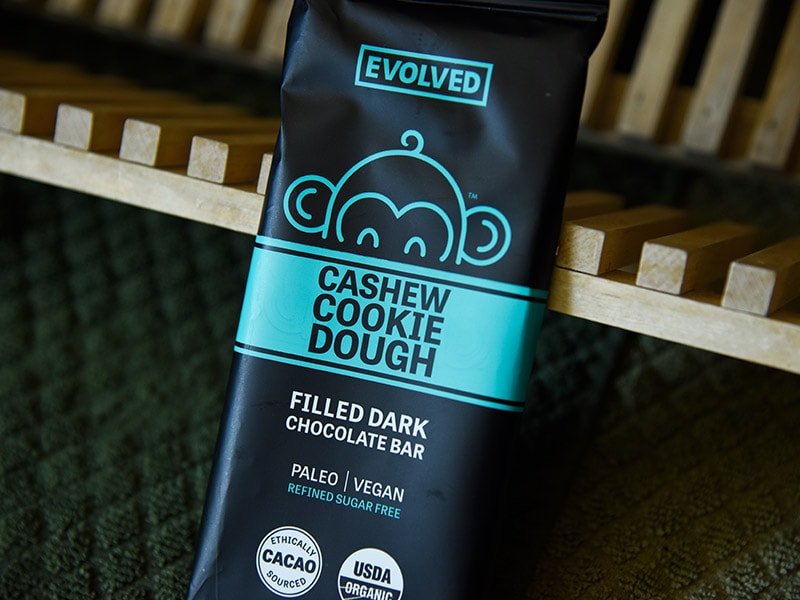
Their chocolates are organic, without dairy, soy, or cane sugar. I am sure they are safe choices for vegans. Evolved chocolate is also perfect for your keto lifestyle as it contains less than ten ingredients per product.
Loving Earth
Another brand from Australia is my favorite of the day: Loving Earth. The brand offers a wide range of vegan chocolates. Their products are all fair trade, gluten-free, and dairy-free. I think you should store at least one of these healthy snacks in your drawer at work.
I believe you will put more vegan chocolate brands in your cart after finishing this sweet tour.
Vegan Chocolate Substitutes
The chocolate world opens a ton of options for you. But speaking of vegan chocolate, I will only mention all the healthy alternative substitutes.
Carob
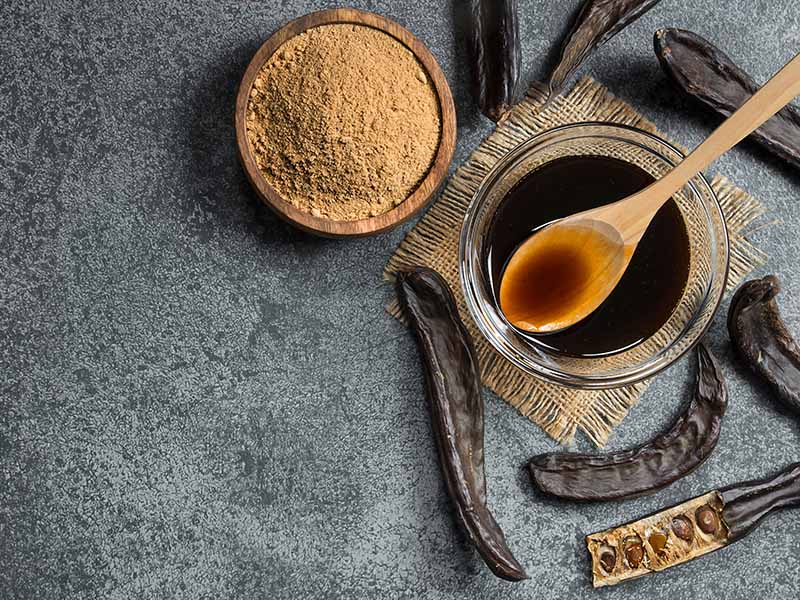
You can view carobs as a healthy version of chocolate. This legume contains beneficial nutrients and is completely caffeine-free, especially suitable for children and those who are sensitive to caffeine.
Plus, carob powder derived from the carob tree (Ceratonia siliqua) is often used to replace cocoa powder (the main ingredient of chocolate) in cooking and pharmaceutical products.
Cocoa Nibs
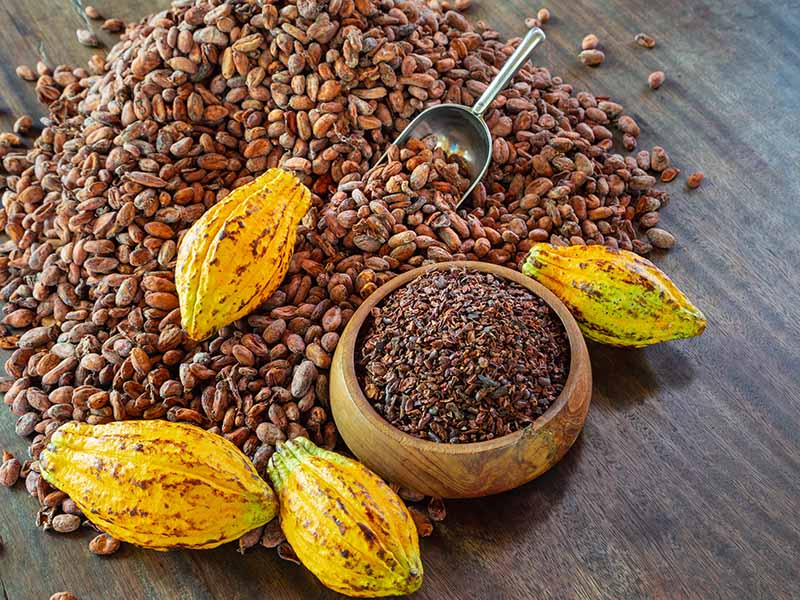
The benefits of cocoa bibs are similar to dark chocolate. Cocoa nibs are rich in protein, antioxidants, and fiber. Phenylethylamine in cacao nibs helps focus, and anandamide is the substance that boosts your mood.
Cacao nibs are a less sweet version of dark chocolate. It comes as no surprise that cocoa nibs have similar uses to your sweets. You can use cocoa nibs as a healthier substitute for chocolate chips because it contains less sugar.
Let’s deep dive into the process of making cocoa nibs!
Learn to Make Homemade Vegan Chocolates With Me
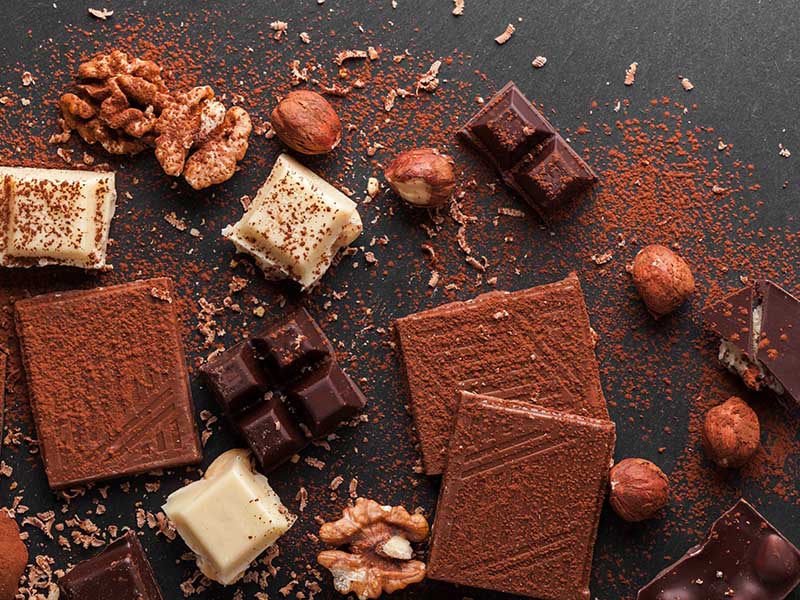
Do you know what the best valentine’s gift for vegans is? The correct answer is vegan chocolate. Don’t worry if you are a bad cook or think that it’s too complicated to make. I am here to save the day.
Ingredients
Let’s get used to the ingredients list. This is the easiest recipe, so you only need three things in your hands.
- ½ cup coconut oil
- ⅓ cup maple syrup
- ½ cup cocoa powder
Step-By-Step Instructions
When you can get all the ingredients, you are half done with the success. With a few more simple steps, your delicious homemade vegan chocolates are ready in no time.
Step 1: Gather All Your Ingredients
Check all your ingredients to make sure they are in the best condition. Be sure the coconut oil and maple syrup are both at room temperature.
Step 2: Mix Them Up
Pour coconut oil, cocoa powders, and maple syrup into a bowl and mix them. Stir until no more lumps of powder are visible.
Step 3: It’s Pouring Time!
Take out the prepared chocolate mold. I recommend using a silicone mold to make it easier to take out the result when done. Pour the mixture into the holes one at a time.
Step 2: Enjoy Your Sweet Results!
Place the mixture in the freezer for 2 hours until it hardens. Then take the confection out of the mold and…what are you waiting for? Let’s enjoy it.
Let’s Unbox These Sweet Vegan Chocolate Recipes
Are you interested in learning more? Tie on your apron and prepare your kitchen with the storm of my extraordinary vegan chocolate recipes.
Fudgy Vegan Brownies
Once you start baking these fudgy vegan brownies, you won’t mind about store-bought versions ever again. This recipe uses all vegan-approved products, including chocolate chips, and is completely egg-free. Say no more! Let’s make your vegan brownies dream come true!
Healthy Vegan Chocolate Truffles
I have another vegan recipe for you. These balls may not be truffles in the traditional sense but are more of a healthy alternative.
Coconut is one of the most used ingredients in this recipe, alongside cacao. You will have coconut milk as an alternative to cow milk, while coconut oil is used to melt chocolate chips.
Try to make these super easy Vegan Chocolate Truffles at home!
Vegan Double Chocolate Chip Cookies
What I love about this recipe is that there is no special equipment involved. Grab your spatula and preheat the oven. You are more than ready. Even if you are new to baking, you can easily make these cookies.
You’ll replace the regular egg with a chia egg in this recipe. Sounds interesting, right? And it only takes 15 minutes of baking for your lovely vegan cookies.
Keep Your Chocolates Fresh With The Correct Storages
Even though you are a chocolate lover, you can not finish them all in one night. Thus, you may wonder whether your chocolate can get spoiled.
While the answers can vary under different circumstances, without a proper preservation, your chocolates will be watery, lose their taste, or clump. I can’t even imagine watching these sweet gems spoiled. So learning how to properly store chocolate is a must.
All About The Temperature
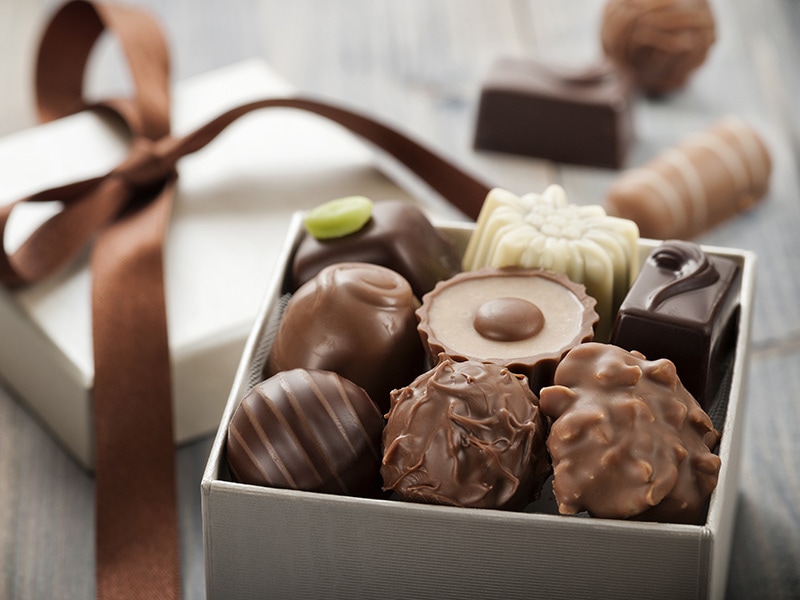
The ideal temperature for preserving chocolate is from 60°F to 70°F. This way, you can store unfilled sweets for 12 to 18 months, depending on the manufacturers.
It is shorter for chocolates filled with jams, creams, and caramels. Frankly, you should finish them within 5 to 7 days after opening the box.
Refrigerate Chocolate – Should Or Shouldn’t?
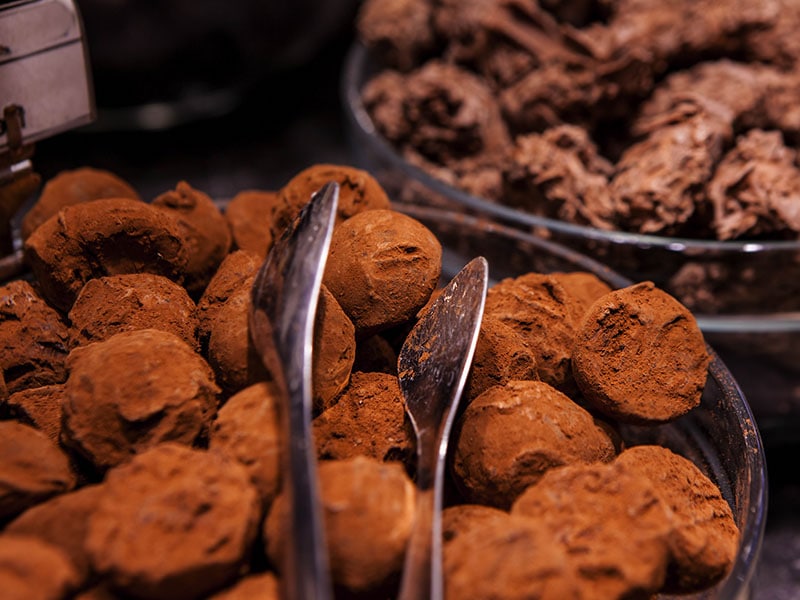
The temperature in the refrigerator is consistent and best to keep chocolate from melting. Basically, storing at a low temperature prolongs the shelf life of confectionery than at outside temperature. It can extend chocolates shelf life by 25%, to say the least.
However, I do not recommend this method if your fridge carries too many cooked foods or does not have a separate compartment for confectionery. Because chocolate will absorb moisture and odors from the food it’s near. Or worse, it will form a white coating called “sugar bloom”.
Wake up after one night and look for your favorite snack, and voila, it’s spoiled. That is the worst scenario.
Keep Your Chocolate In A Cool Place
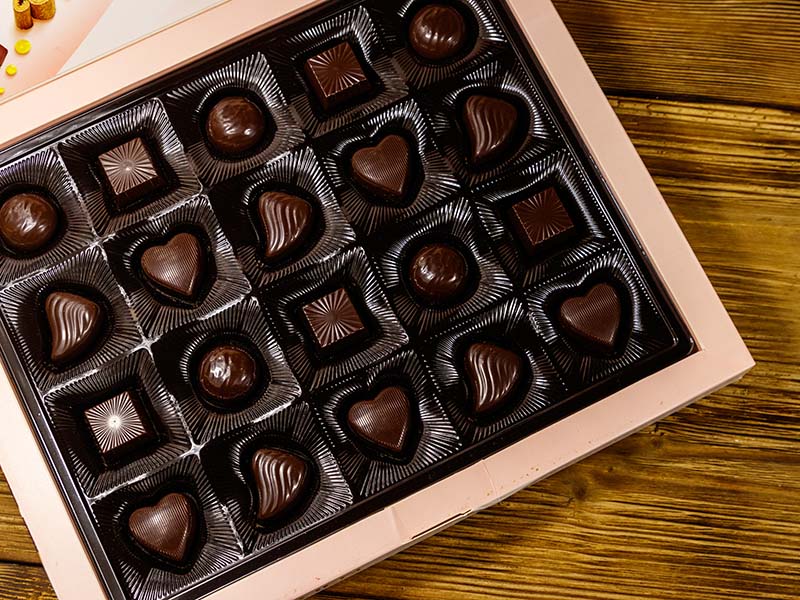
Room temperature is enough to preserve chocolate, but it’s also important to keep a humidity of less than 50%. Find a place in a kitchen drawer, or dry food cabinets to “hide” your treasure.
Avoid keeping chocolate near high temperature or humid environments such as gas stoves, microwave ovens, or rice cookers.
And chocolate is not a plant, so it does not need strong light to photosynthesize. Therefore, you should avoid leaving them in places with strong light, not just sunlight but also artificial light.
For half-eaten chocolate boxes, seal them in an air-tight container. Oxygen does not do anything good to your candies. It will oxidize chocolate, leading to a less ideal flavor.
Freeze It If You Want to
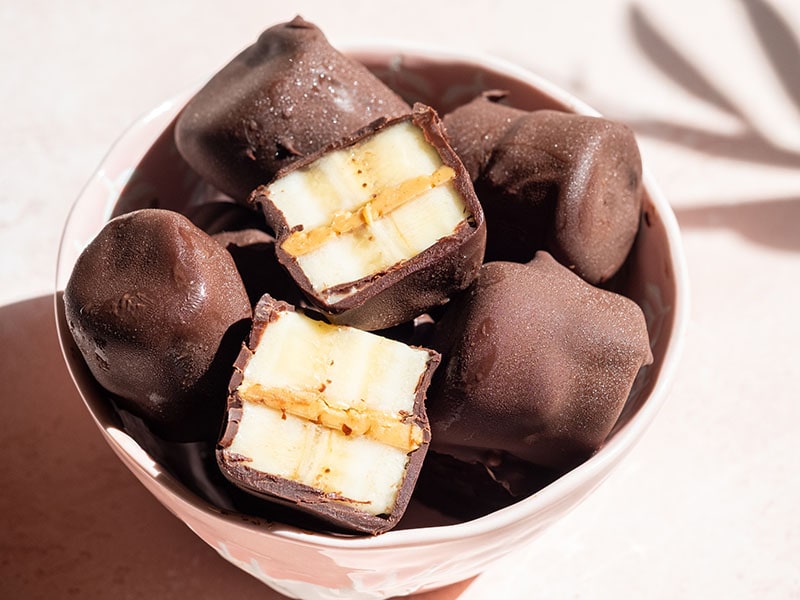
If you want to store chocolate for six months to a year, don’t forget your friend: the freezer. However, follow my steps and do not hastily put the confection in the freezer immediately.
The first thing to do is to leave the chocolate in the refrigerator. Once 24 hours of waiting is over, move your candies from the fridge to the freezer. Reverse the steps if you want to enjoy it.
FAQs
It’s time to give some extra information. I hope these may come helpful to you someday. You can thank me later.
So Vegan Chocolate Does Exit. Hurry Up and Grab A Bar!
For many people, vegan chocolate is no longer an alien concept nowadays. I can say that many chocolate brands have opened the door of a wonderland to vegans.
You can find vegan chocolate at stores or supermarkets. Or you can make your vegan version at home with simple recipes.
Have you grasped the moral of the story? I would love to hear your thoughts in the comment section. And if you think this article helps you gain more insights about this sweet world, please share it with your friends.
All of your kind words motivate me to keep on publishing. Thank you!
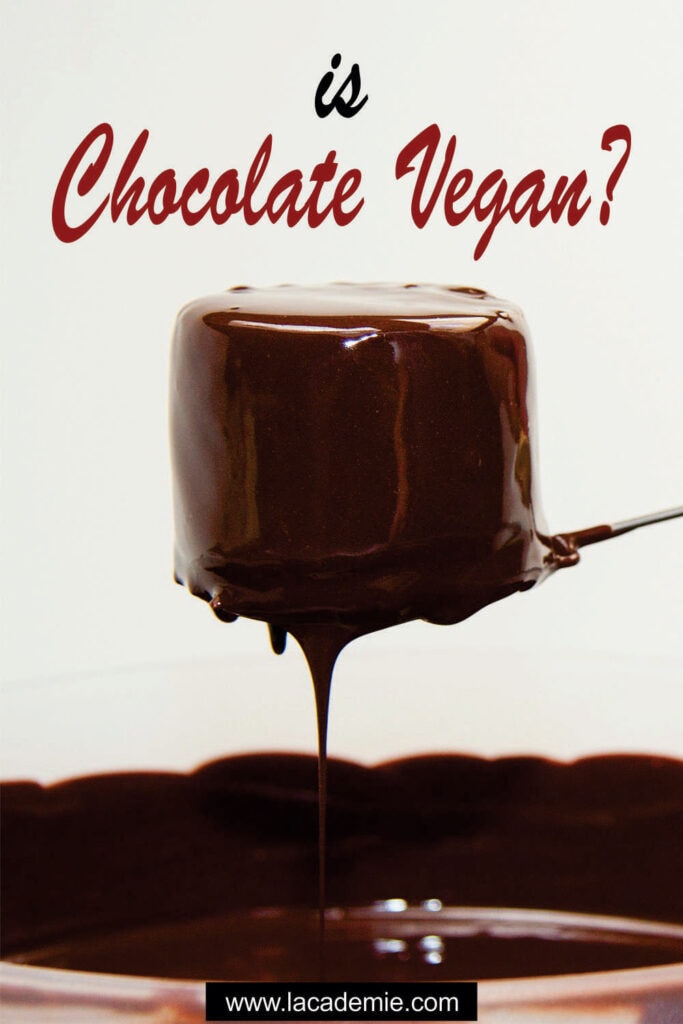
Reference
- magnumv2. 2022. The History of Chocolate.
- Gentle, P., 2021. Cocoa as an Early form of Money in the Economic Sense: Satisfying Store of Value, Unit of Account and Medium of Exchange Requirements. SocioEconomic Challenges, 5(4), pp.90-97.
- World Cocoa Foundation. 2022. History of Cocoa | World Cocoa Foundation.
- HISTORY. 2022. Chocolate’s Sweet History: From Elite Treat to Food for the Masses.
- Nutritiondata.self.com. 2022. Candies, chocolate, dark, 70-85% cacao solids Nutrition Facts & Calories.
- The Nutrition Source. 2022. Dark Chocolate.
- Montagna, M., Diella, G., Triggiano, F., Caponio, G., Giglio, O., Caggiano, G., Ciaula, A. and Portincasa, P., 2019. Chocolate, “Food of the Gods”: History, Science, and Human Health. International Journal of Environmental Research and Public Health, 16(24), p.4960.

